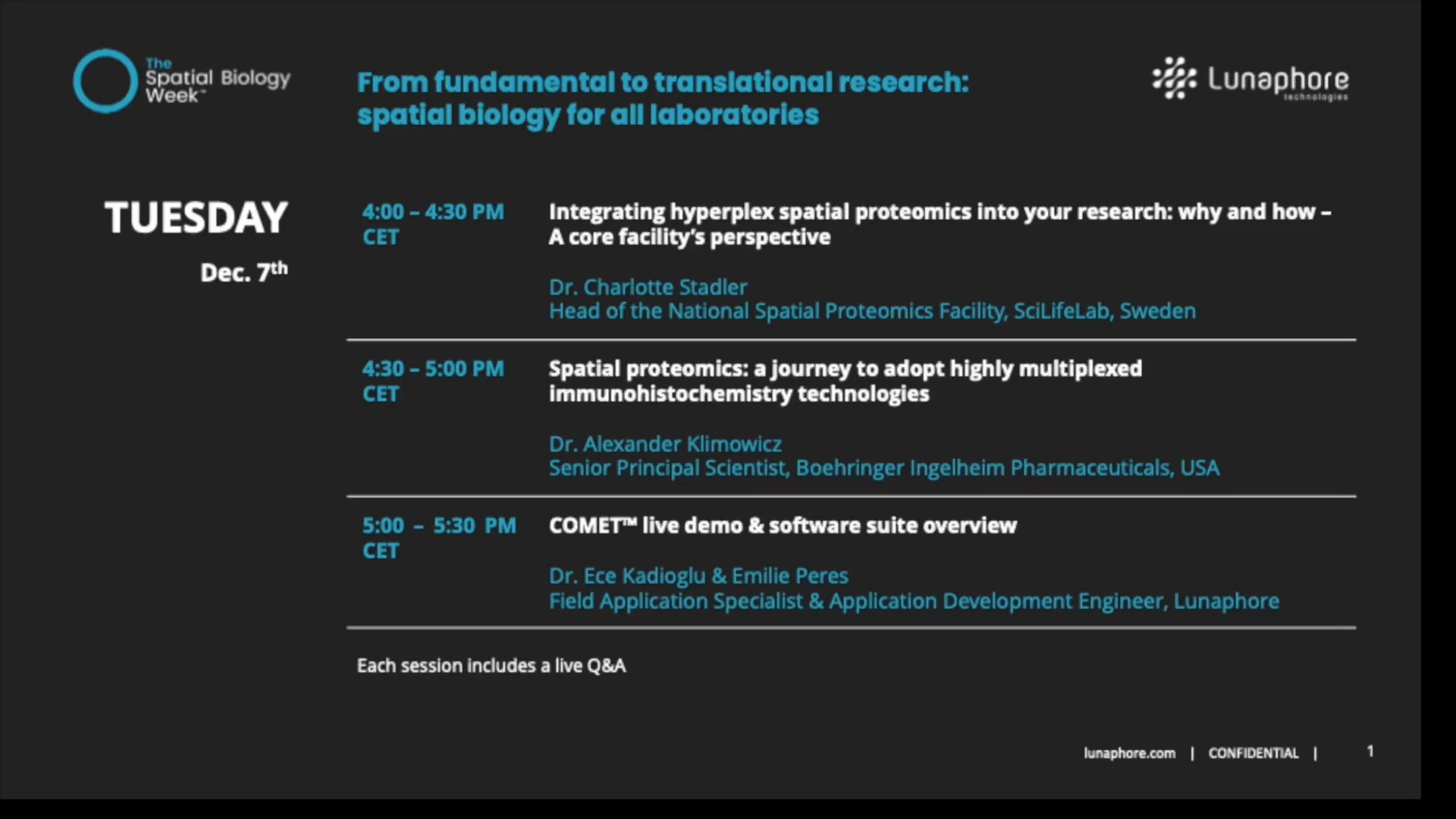Integrating hyperplex spatial proteomics into your research: Why and How
A core facility’s perspective
To simultaneously visualize multiple markers within the same sample enables a more detailed view of cellular phenotypes and how they orient in space. This brings a more profound understanding of the function and interplay of different cell types in situ, which is of value for research related to many biological conditions. For most labs, accessing and applying emerging spatial methods for highly multiplexed detection of various types of molecules is not straightforward. The Spatial and Single Cell Biology (SSCB) platform at SciLifeLab offers several spatial omics methods, including advanced single-cell sequencing, spatial transcriptomics, in situ sequencing, spatial mass spectrometry, and spatial proteomics. In this talk, Dr. Stadler presents the possibilities for spatial omics as a service at Scilifelab, emphasizing the methods offered for spatial proteomics using highly multiplexed immunofluorescence. Her Spatial Proteomics team, as part of the SSCB platform, currently provides a service to analyze up to 30 proteins in the same tissue section using DNA-barcoded antibodies. In 2022, the COMET™ instrument from Lunaphore was fully integrated into the SSCB platform and is currently offered as a service. COMET™ performs sequential indirect immunofluorescence to allow for multiplexed protein detection in 4 samples in parallel. In this talk, Dr. Stadler shows results obtained with COMET™ on several tissue types.
Agenda:
- Service offered within the Spatial and Single Cell Biology platform at Scilifelab;
- Multiplexed spatial proteomics using sequential immunofluorescence;
- Building a multiplexed immunofluorescence panel with COMET™.
